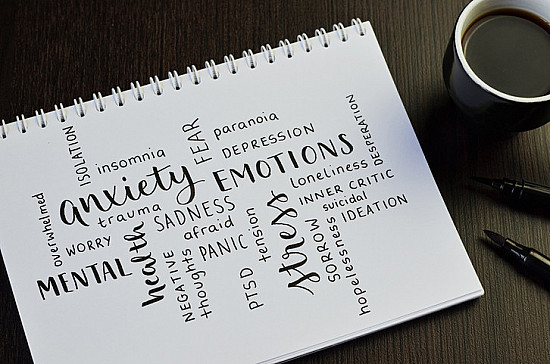
Over the course of a lifetime, as many as seven in 10 adults in the United States will directly experience or witness harrowing events. These include gun violence, car accidents, and other personal trauma; natural or human-made disasters, such as Hurricane Katrina and the 9/11 terrorist attacks; and military combat. And some — though not all — will experience post-traumatic stress disorder, or PTSD.
New guidelines released in 2024 can help guide effective treatment.
What is PTSD?
PTSD is a potentially debilitating mental health condition. It’s marked by recurrent, frightening episodes during which a person relives a traumatic event.
After a disturbing event, it’s normal to have upsetting memories, feel on edge, and have trouble sleeping. For most people, these symptoms fade over time. But when certain symptoms persist for more than a month, a person may be experiencing PTSD.
These symptoms include
- recurring nightmares or intrusive thoughts about the event
- feeling emotionally numb and disconnected
- withdrawing from people and certain situations
- being jumpy and on guard.
The National Center for PTSD offers a brief self-screening test online, which can help you decide whether to seek more information and help.
Who is more likely to experience PTSD?
Not everyone who experiences violence, disasters, and other upsetting events goes on to develop PTSD. However, military personnel exposed to combat in a war zone are especially vulnerable. About 11% to 20% of veterans who served in Iraq or Afghanistan have PTSD, according to the National Center for PTSD.
What about people who were not in the military? Within the general population, estimates suggest PTSD occurs in 4% of men and 8% of women — a difference at least partly related to the fact that women are more likely to experience sexual assault.
What are the new guidelines for PTSD treatment?
Experts from the U.S. Department of Veterans Affairs and Department of Defense collaborated on new guidelines for treating PTSD. They detailed the evidence both for and against specific therapies for PTSD.
Their findings apply to civilian and military personnel alike, says Dr. Sofia Matta, a psychiatrist at Harvard-affiliated Massachusetts General Hospital and senior director of medical services at Home Base, a nonprofit organization that provides care for veterans, service members, and their families.
The circle of care is widely drawn for good reason. “It’s important to recognize that PTSD doesn’t just affect the person who is suffering but also their families and sometimes, their entire community,” Dr. Matta says. The rise in mass shootings in public places and the aftermath of these events are a grim reminder of this reality, she adds.
Which treatment approaches are most effective for PTSD?
The new guidelines looked at psychotherapy, medications, nondrug therapies. Psychotherapy, sometimes paired with certain medicines, emerged as the most effective approach.
The experts also recommended not taking certain drugs due to lack of evidence or possible harm.
Which psychotherapies are recommended for PTSD?
The recommended treatment for PTSD, psychotherapy, is more effective than medication. It also has fewer adverse side effects and people prefer it, according to the guidelines.
Which type of psychotherapy can help? Importantly, the most effective therapies for people with PTSD differ from those for people with other mental health issues, says Dr. Matta.
Both cognitive processing therapy and prolonged exposure therapy were effective. These two therapies teach people how to evaluate and reframe the upsetting thoughts stemming from the traumatic experience. The guidelines also recommend mindfulness-based stress reduction, an eight-week program that includes meditation, body scanning, and simple yoga stretches.
Which medications are recommended for PTSD?
Some people with severe symptoms need medication to feel well enough to participate in therapy. “People with PTSD often don’t sleep well due to insomnia and nightmares, and the resulting fatigue makes it hard to pay attention and concentrate,” says Dr. Matta.
Three medicines commonly prescribed for depression and anxiety — paroxetine (Paxil), sertraline (Zoloft), and venlafaxine (Effexor) — are recommended. Prazosin (Minipress) may help people with nightmares, but the evidence is weak.
Which medications are not recommended for PTSD?
The guidelines strongly recommended not taking benzodiazepines (anti-anxiety drugs often taken for sleep). Benzodiazepines such as alprazolam (Xanax) and clonazepam (Klonopin) offer no proven benefits for people with PTSD. They have several potential harms, including negative cognitive changes and decreased effectiveness of PTSD psychotherapies.
What about cannabis, psychedelics, and brain stimulation therapies?
Right now, evidence doesn’t support the idea that cannabis helps ease PTSD symptoms. And there are possible serious side effects from the drug, such as cannabis hyperemesis syndrome (severe vomiting caused by long-term cannabis use).
There isn’t enough evidence to recommend for or against psychedelic-assisted therapies such as psilocybin (magic mushrooms) and MDMA (ecstasy). “Because these potential therapies are illegal under federal law, the barriers for conducting research on them are very high,” says Dr. Matta. However, recent legislative reforms may make such studies more feasible.
Likewise, the evidence is mixed for a wide range of other nondrug therapies, such as brain stimulation therapies like repetitive transcranial magnetic stimulation or transcranial direct current stimulation.
